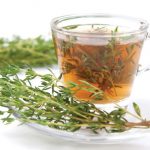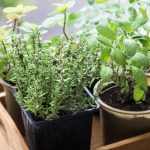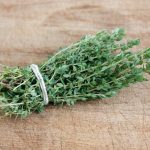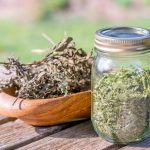by Arshdeep Kaur Longia | Aug 5, 2020 | Health and Immunity
Benefits of Insulin Plant
Costus igneus, commonly known as Insulin plant in India, belongs to the family Costaceae. Consumption of its leaves is believed to lower blood glucose levels, and diabetics who consumed the leaves of this plant did report a fall in their blood glucose levels. A leaf–a-day, keeps diabetes away is the famous saying about this plant. Diabetes is a disease of metabolism, where body is not able to synthesis sufficient insulin or the blood cells stop responding to the insulin produced in the body. The leaves of insulin plant contain mostly of Corosolic Acid which is beneficial in controlling diabetic. Its leaves strengthen the beta cells of the pancreas in the human body, thus balancing the insulin levels.
A number of studies and researches have been done to assess the anti-diabetic properties and potential of the insulin Plant. Besides, it’s been demonstrated to have various pharmacological activities like hypolipidemic (cholesterol lowering), diuretic, antioxidant, anti- inflammatory and anti-cancerous.
What does the insulin plant look like?
The plant has large fleshy leaves. The undersides of the leaves are smooth and dark green with light purple shade. The leaves are spirally arranged around the stem. The maximum height reaches up to 2 feet. The dried leaves are used in making of ayurvedic medicines. The flowers are orange in color. Flowering occurs during the warm months. The species reproduce vegetative by rhizome and birds disperse seeds when they feed on the fruits. Propagation is by stem cutting.
Here are some benefits of Insulin
- Curing Diabetes
Insulin is a magical cure for diabetes. Consumption of its leaves reduces blood sugar level. Regular consumption of the leaves can aid in preventing the onset of chronic health complications developed as a result of diabetes. The plant is a magic wand for the ill-effects of diabetes.
- Natural Pre-biotic to Smooth Digestion
The leaves have high level of natural fructose which smoothen the colon functioning system. It improves digestion by acting as a natural pre-biotic and promotes the growth of good bacteria in the gut which aids in better nutrient absorption and digestion.
- Anti-Bacterial
The anti bacterial properties of Insulin help to kill the unwanted bacteria in the body. The methanolic extracts of flower and stem of C. pictus possess in vitro antioxidant activity against oxidative protein damage. It can protect your body from bacterial infections due to its antibacterial properties. So, say bye-bye to bacterial infections.
- Natural Antioxidant
The plant has antioxidant properties which help in destroying free radicals and protects body from several health disorders. The antioxidant properties of the herb are concentrated in the methanolic extracts found in the rhizomes and leaves of the plant.
- Liver Illness
Liver dysfunction can lead to many disorders. It is very important to take care of your liver through your diet. Insulin leaf consumption will help to improve the health of the liver by eroding the poison slowly out from the liver. As the plant can break down the fat deposits and unnecessary toxins in the liver, it can treat liver problems and keep your liver healthy.
- Anti- inflammatory
Leaves promote smooth airflow in lungs. Thus, help to alleviate the symptoms of asthma and bronchitis and also aids in curing sore throat. Its potion can be consumed in winters as well to keep the common cold away.
- Kidney Health
Insulin plant has sodium and water retention capacity and diuretic property. Hence, it can improve the health of your both bladder and kidney by increasing urination rate. The increased urination rate prevents the development of kidney stones which can cause severe urination problems in the long run if not treated early.
- Immunity Enhancer
The changes in our lifestyle have made us much more sensitive to various elements which are constantly leading to a decrease in immunity level. This can be prevented to some extent by use of this plant. The antioxidant properties of the herb are effective in improving your immune system. It removes the toxins such as free radicals. Regular consumption can improve the immune system and shield your body from any illness.
- Blood Pressure Reducing
Hypertension has become very common now days due to our unhealthy diet intake. Fatty foods lead to increase in the blood pressure and can cause damage our body. Insulin herb is known to turn down hypertension. Regular consumption of the herb will aid in reducing high levels of blood pressure and calming the heart.
- Cancer Prevention
Preventing is always better than cure. Some studies showed that the Insulin plant has anti-proliferative and anti-cancerous properties. So, it can prevent cancer by killing bad cells and you can stop fearing cancer.
- Cholesterol Reducing
It also can reduce cholesterol levels in the blood. And thereby, prevent cardiovascular diseases. Therefore, it minimizes bad cholesterol and rises up the good cholesterol.
CAUTION: Pregnant women and lactating mothers should avoid the consumption of Insulin plant as it affects the hormonal balance.
Want to grow your own Insulin plant? Subscribe the newsletter for my next blog on its plantation.
by Arshdeep Kaur Longia | Jun 23, 2020 | Gardening
- Where can Vertical Garden be grown?
- Why to install a vertical garden
- Food Security
- Physiological Benefits
- Environment Benefits
- Economic Benefits
Is your love for gardening fading away due to limited space in your high rise apartment or your home? Do not worry!! Vertical gardening is the solution for your problem. Vertical gardening is a virtuous recourse for people who want save space; these are easy to maintain as they are easy to reach without bending; a large diversity of plants can be maintained within it.
Where can these be grown?
Car parking, inside office buildings, along lane ways or rooftops.
why to install a vertical garden
No doubt, these gardens have an aesthetic merit but most supremely they do good to the environment as well. Here are some of the benefits;
FOOD Security
• Due to the corona virus crisis, the fear of food shortage is now residing in everyone’s mind. We are dependent on farmers for the same but we can grow most of our food in our homes as a safety measure. Vertical gardens produce healthy and clean harvest.
• Small fruits, vegetables and herbs can be grown very easily without the use of pesticides.
• It is a safe way of gardening as it minimizes the risk of pest attack.
• Food grown vertically is much prettier than the crops grown on ground. The fruits grow straight when trellised, since gravity pulls them down. Plus, there won’t be an ugly yellow spot on heavier vegetables and you get gorgeous vegetables.
Environmental Benefits
• Vertical gardening helps to reduce the carbon dioxide footprint of a building by filtering pollutants and carbon dioxide out of the air which also benefits those living nearby due to improved air quality.
• Exterior wall vertical gardens also help to reduce heat absorption, which can result in significant energy savings in areas where people rely on air–conditioning during the warmer parts of the year.
• These gardens can significantly help to reduce Urban Heat Island Effect and smog.
• The waste produced in our house can be reused for the same, such as- plastic bottles, old shoe organizers, baskets, broken ladder, etc.
• Indoor plants improve inner air quality by removing VOCs (Volatile organic compounds) and other harmful toxins.
• It acts as natural sound proofing barrier as the vegetated surface blocks high frequency sounds.
• Create a microclimate– you can insulate your home from heat, air pollution or noise by designing a living natural shield. This also helps to regulate temperature.
Physiological Benefits
Professor Virginia Lohr of Washington State University found in a study, that plants reduce the physical signs of stress. Dr. Lohr discovered that people working in an environment with plants present were 12% more productive and less stressed than those who worked in an environment without plants.
There are numerous other studies that highlight the positive impact of green spaces upon human well being. Honeyman 1987 found that buildings that feature and promote access to vegetation have a greater positive human health impact than those without. Green buildings have even been shown to increase post-operative recovery rates in medical facilities .
Economic Benefits
• Increase foot traffic in retail spaces as green walls create spaces that people want to spend time in.
• Provide thermal insulation.
As green walls provide insulation to buildings there is less demand upon power, saving cash as well as reducing the amount of polluting by-products that are released into the atmosphere.
• Vertical gardens both insulate and cool buildings, providing a kind of safety blanket that protects the building from the elements, saving money on repairs in the long run.
• Vertical gardens require the expertise of professionals from a variety of disciplines including landscape architects, architects, irrigation consultants and more helps create local jobs.
Vertical Gardening Techniques
Watch more on vertical gardens
Want to find out vertical gardening ideas for turning a small space into a big harvest? Subscribe the newsletter for the same.
by Arshdeep Kaur Longia | Jun 14, 2020 | Student's Column
Why do we have missions to Mars but not to Mercury? Mostly because there’s some anticipation that Mars can support life, whereas, Mercury can’t. This is because the daytime temperature on Mercury reaches to 430 degree Celsius, probably hot enough to melt lead and during night it cools down to -183 degree Celsius, cold enough to liquefy oxygen.
Now the questions arise; why are we even planning to live on some other planet? Is earth not enough? Are we so greedy that the millions of resources which are helping us survive will happen to totally exhaust one day? Or we are really finding a planet to ensure the survival of our next generation?
There are many questions but with scanty answers.
Human beings often forget that we are completely dependent on Mother Nature and become ignorant towards caring for it. But the Covid-19 lockdown is healing the planet in a way never seen before in living history! Well, it’s too early to tell if these transitions will last forever. Experts say, the environment would suffer once the quarantine measures are lifted and industries would work double the time to make for what they have lost.
There is no doubt, the COVID restrictions have impacted the environment positively.
According to a survey, China’s nitrogen level has dropped by 30% after the lockdown started in January as the industries and cars (the primary producers of N02) were brought to a stop. A research found that the coal consumption fell by 40%. Also, China’s Ministry of Ecology and Environment reported a decrease in chemicals, phosphorus and ammonia in the country’s surface water during this period.
The fear of food shortage is another aspect that is slowly bringing the world to its knees. This pandemic has taught one important lesson, ‘Grow your own food’. Look around you and find spaces that could be filled with food. But the real interest in urban farming will only show once the lockdown is over. There have been reports of panic buying during the lockdown. Food shortages are predicted to cause violent and unrest – a senior economist at FAO said.
Plants are growing better because there is cleaner air and water and because of less human interference.
What’s happening in India?
The number of flamingoes has increased in Mumbai as a result of lockdown. The birds normally migrate to the Navi Mumbai area every year but there is a massive increase in their numbers this year.
 Air quality- India has also observed a drastic change, a positive one, in the air quality. The sky seems cleaner now. Even the birdsong seems much louder. Delhi, the most polluted city is now breathing in fresh air after a long time.
Air quality- India has also observed a drastic change, a positive one, in the air quality. The sky seems cleaner now. Even the birdsong seems much louder. Delhi, the most polluted city is now breathing in fresh air after a long time.

Water quality– since there are no boats, whether they be fishing or pleasure ones, plying on the rivers and waterways, the water has cleared up. No doubt, because of the lesser human footfall even the oceans are recovering. The critically endangered, Ganges River dolphins are back after 30 years just because of less water pollution near Kolkata Ghats.

Ganga river is now fit for drinking,. Water from Har-ki-Pauri in Haridwar was tested and the results reveal that the water here is ‘fit for drinking after chlorination’, for the first time in decades. Water quality improved tremendously in the upstream but downstream Varanasi has seen very little change,” said a CPCB scholar working on the Clean Ganga project.

Effect on wildlife- lockdown has seen a decline in fishing, which means that the fish biomass will increase after over fishing almost, depleted it.
With less fear of busy streets and humans trapped indoors, animals are returning to roam around their urbanized habitats. In many cities with busy freeways, less vehicles on the road also means less road killing of these animals.

So, overall there is a positive impact on environment with COVID restrictions. It teaches us a lesson that If we all work together and responsibly, we can make these improvements permanent and there will be no need to plan expensive missions to other planet when we have lots to do here.
The conclusion is, we can save Earth for our future generations by using the resources wisely. Earth has abundant of resources which can make our lives easy and happy.
by Arshdeep Kaur Longia | Jun 11, 2020 | Health and Immunity
Thyme has many uses, from kitchen to natural health to home care. It is the most versatile herbs around. In the kitchen it adds savory flavor to roasted meat, soups, vegetables or fish. It also imparts exciting flavor to marinades, stocks and soups, cocktails and teas. Thanks to the potent natural antiseptic thymol, found in the plant’s leaves which are extremely useful.
What does it taste like?
Fresh thyme has a pronounced, concentrated herbal flavor with sharp grass, wood and floral notes. The fragrance of the lemon variety is more prominent.
Here is a list of its uses:
1. Cough syrup– according to the German Commission E, thyme is an approved treatment for coughs, bronchitis, respiratory infections. Try this simple recipe of cough syrup to get relieved;
– Boil 1 cup water
– Remove from heat
– Add thyme and let it sit for 20 minutes
– Strain and whisk with ½ cup honey.
This syrup can be refrigerated in a glass jar for up to 1 month.
2. Cold- busting herbal tea– mucus buildup in the throat and lungs can linger if not attended to on time. Thyme is a strong antimicrobial, antispasmodic and relaxant for the bronchi. Thyme tea makes a great gargle for gum disease and sore throat. Mullein soothes itchy and irritating coughs. Horehound has gentle, expectorant, stimulating effect on the lungs which helps in clearing away the phlegm. Here’s how to combine these 3 effective herbs:
– 2 teaspoons dried mullein flowers/leaves
– 2 teaspoons dries horehound flowers/leaves
– 2 teaspoons dried thyme
– 2 cups boiling water
• Add these 3 herbs in a teapot
• Add the boiling water, cover and let it steep for 10 minutes. Strain and drink hot
Drink 2-3 cups a day of this tea for a week or until the symptoms disappear.

CAUTION: avoid thyme during pregnancy as it is a uterine stimulant.
3. Skin cleanser- try this 4 ingredient cleanser for a clear skin;
– ¼ cup pure honey
– ¼ cup water
– 1 teaspoon fresh chopped thyme
– 2 teaspoon liquid castile soap
Massage a small amount into skin, rinse with warm water and pat dry.
4. All purpose cleaner– add 10 drops of antiseptic thyme essential oil to 1 gallon of hot water and ½ cup castile soap. Pour into a spray bottle and clean anywhere in your home.
5. Insect repellent– a study found that thyme oil when applied to the skin, repelled mosquitoes for 1-3 hours in a lab setting. But some essential oils can cause dermatitis, so it should be mixed with a carrier oil, like coconut oil, before application.
Coming to a list of few cooking styles that are definitely irresistible;
• When baking bread, add a few pinches of dried thyme to the flour and your bread would taste great with butter.
• Add dried leaves to your favorite pasta sauce and voila! It tastes so yummy.
• You can also decorate your desserts, like custards.
• Leaves without the stem just work great when added to fresh veggie salad. It gives your salad a kick that no dressing will achieve on its own.

• Dried thyme added right at the end of cooking to soups brings an aroma to the dish that is hard to miss. Just add the herb and immediately remove from heat and keep covered. The soup will smell heavenly.

• Vegetables and seafood have a mild flavor and fresh thyme leaves work wonders in bringing out the subtle flavors and the taste is just electrifying.
• Fresh leaves can be used in the marinade which gives meat a savory taste.

Wit and Wisdom: Burning thyme inside the house can help get rid of unwanted insects.
What’s your favorite way to use this effective and wonderful herb? Let us know in the comment box!
by Arshdeep Kaur Longia | Jun 3, 2020 | Gardening
My last blog discussed about the benefits of thyme. After reading them who would not think of growing it in their own garden and get benefitted from its medicinal properties. Thyme is a marvelous herb with pleasurable, pungent, clover flavor best grown in summers.
The very first thing to contemplate when purchasing Thyme is that there are two main types of it which are normally used: Ornamental and Culinary. The three most common types of culinary thyme are: Caraway, French and Lemon which add wonderful and satisfying taste (enough to excite your taste buds) to your summer soups, grilled meats and vegetables.
Culinary thyme is a hardy perennial that is evergreen. It is drought- tolerant and pollinator- friendly. You can get the best of its flavor in the summers.
Planting
Where: thyme loves to thrive in full sun and heat. If growing it indoors, plant it near a sunny window. For a head start, plant the cuttings of thyme indoor for 6 to 10 weeks as it’s a little hard to grow thyme from seeds because of slow and uneven germination. Make sure your soil is not too rich in organic matter and is slightly sandy.
When: plant the cuttings after the ground temperature reaches 21 degree Celsius. This is usually 2 to 3 weeks before the last spring.
 Propagate by cuttings: it is the easiest way to plant your thyme. Clip a 4 inch cutting from the very tip of a stem, apply rooting hormone on the exposed portion of the stem and plant it in sterile sand. Roots will make an appearance within about 6 weeks. Transfer to a small pot and let the root ball formation take place. You can later transfer it to a large pot if needed else, directly to your garden.
Propagate by cuttings: it is the easiest way to plant your thyme. Clip a 4 inch cutting from the very tip of a stem, apply rooting hormone on the exposed portion of the stem and plant it in sterile sand. Roots will make an appearance within about 6 weeks. Transfer to a small pot and let the root ball formation take place. You can later transfer it to a large pot if needed else, directly to your garden.
Cultivating
Sun: planting should be done in well- drained soil with an optimal pH of 6.0 or 8.0. organic fertilizer can be added in the early spring.
Water: these require less watering but thorough watering only when the soil is dry.
Spacing: the young plants should be placed 12 to 24 inches apart, depending on the variety you are growing. Their maximum height is 6 to 12 inches.
Companion planting: it can be grown near tomatoes, strawberries cabbage. Also, it can be planted near rosemary as it requires similar weather and watering conditions as of Thyme.
Harvesting
In order to leisure its best flavor, harvest thyme just before it flowers as flowers indicate maturity. It tastes great both fresh and dried. Clip a 5 to 6 inches of growth with scissors, leaving the tough, woody parts. Avoid washing clean leaves as it may rip off some of the essential oils. Regular pruning not only encourages more growth, but also promotes a more rounded shape.

Trouble shooting thyme
Pests: Spiders, aphids, mealy bugs may attack thyme. You can easily knock them out with a strong stream of water or by spraying insecticides.
Diseases: thyme is vulnerable to root rot and fungal diseases. Steer clear of root rot by keeping plants out of wet areas and planting them too close to each other. Botrytis root can be treated with a fungicide.
Preserving and storing thyme
• Refrigeration: cover the fresh thyme in a damp paper towel over wrapped in plastic and refrigerate. Keep it for 1 or 2 weeks in the vegetable crisper.
• Drying: leaves can be dried by clipping the stems and hanging them upside down in a warm, airy place for 3 to 6 days.
• Freezing: put the clippings in sealable plastic bag.
• Storing: dried leaves can be easily stored in an airtight container.

Care:
Water deeply only when the soil is completely dry.
Pruning is necessary as it helps in continuous and healthy growth of the plant. It should be done back in the spring and summer. The more you trim, the more it grows attaining a good shape.
The best flavor you get is from the young plants, so divide the 3 to 4 year old plants.
Protect the plant from freezes with a mulch of chopped leaves, straws or evergreen branches.
Check back on next Thursday to find out its best ways of usage.
By:
Arshdeep Kaur Longia













